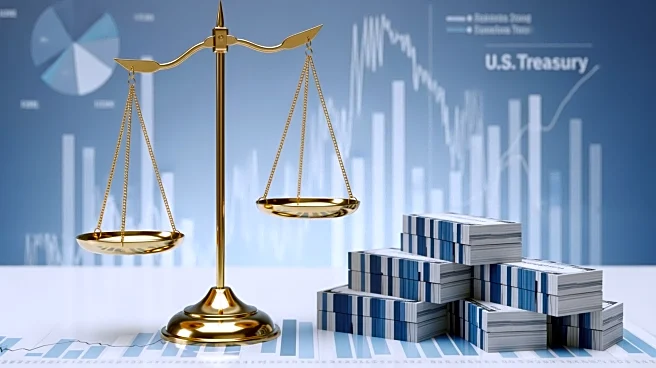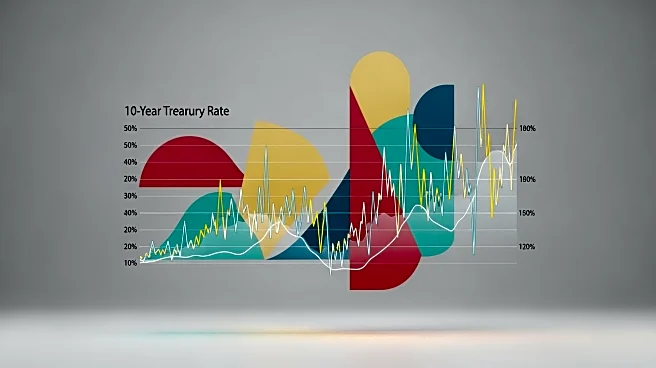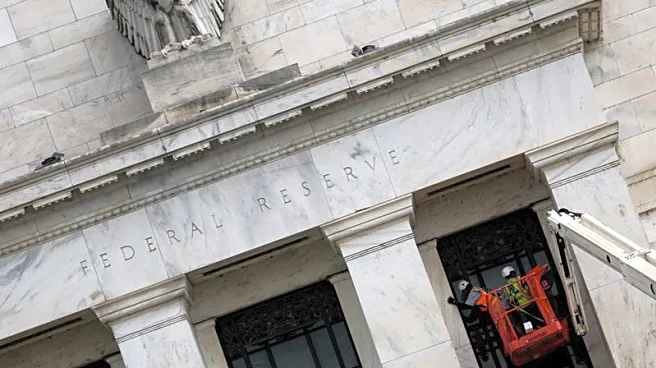What's Happening?
Recent changes in interest rates have influenced the U.S. Treasury supply-and-demand equation. The federal government reached its debt ceiling limit, affecting Treasury issuance and cash balances. With
the debt ceiling lifted, the Treasury is replenishing cash balances and issuing new debt to fund budget deficits. The 'One Big Beautiful Bill Act' extends current tax rates and adds new tax cuts, projected to increase federal debt by $3.4 trillion by 2034. Investors are seeking offsetting factors like weaker economic growth and Federal Reserve rate cuts to justify investing at current yields.
Why It's Important?
Interest rate changes have significant implications for the U.S. Treasury market and broader economic stability. The ability to manage Treasury supply and demand dynamics is crucial for maintaining investor confidence and ensuring fiscal sustainability. The impact of legislative changes and fiscal policy decisions on debt levels and interest rates will be closely monitored by stakeholders. The evolving economic landscape may influence borrowing costs and investment strategies across various sectors.
What's Next?
Policymakers may need to consider strategies to manage the impact of interest rate changes on Treasury supply and demand dynamics. Efforts to address fiscal sustainability and stabilize interest rates will be important for maintaining confidence in U.S. debt securities. The potential for changes in monetary policy and economic conditions will be closely monitored by investors and financial institutions.
Beyond the Headlines
The ethical and legal dimensions of fiscal policy decisions may become more prominent as stakeholders consider the implications of rising debt levels. Long-term shifts in investor behavior and global perceptions of U.S. economic stability could influence the role of the dollar as a reserve currency. The balance between fiscal responsibility and economic growth will be a key consideration for policymakers and financial markets.












